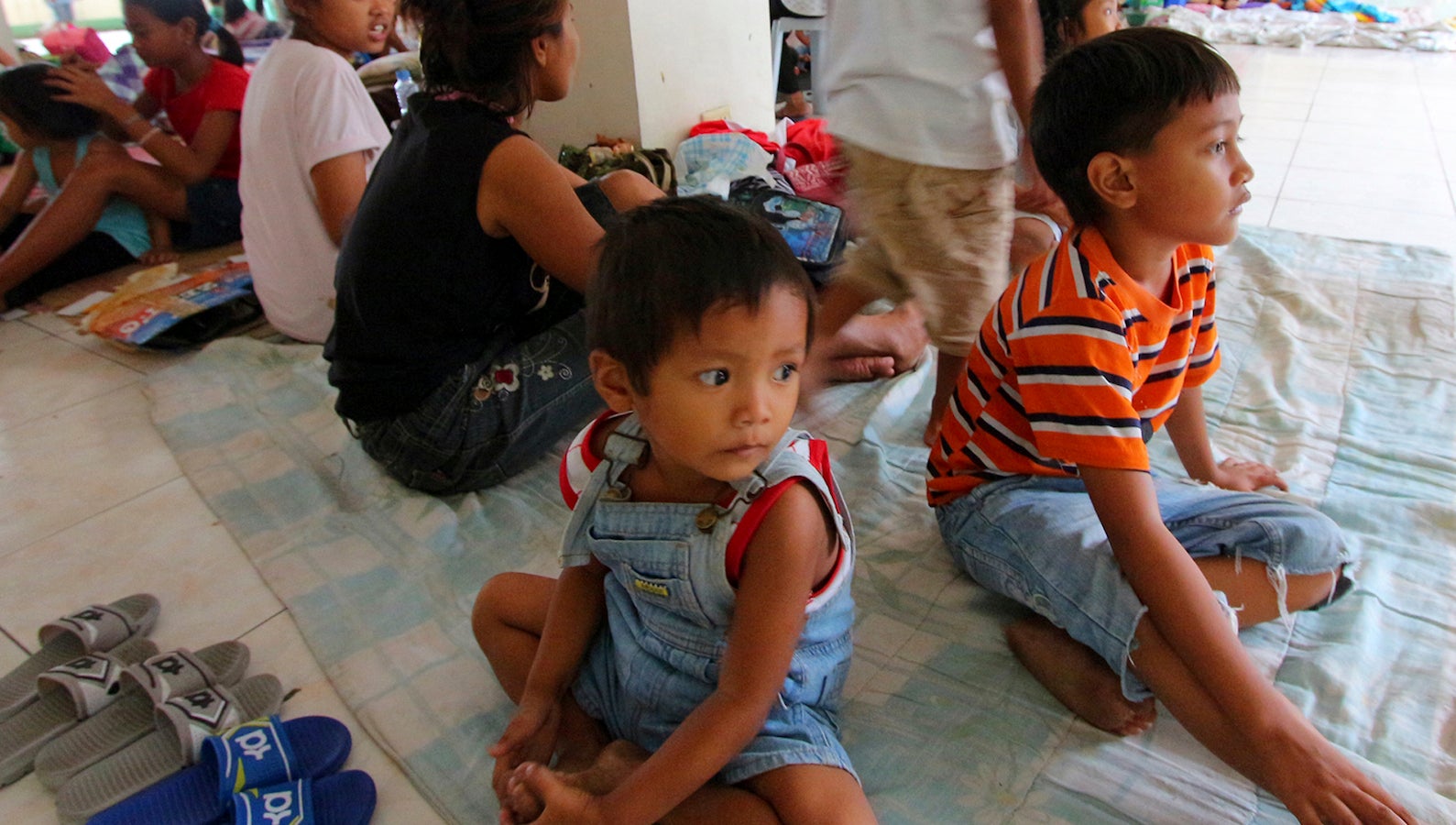Typhoon Melor has forced nearly 800,000 people to evacuate in the Philippines
Nearly 800,000 people in the Philippines evacuated their homes as Typhoon Melor—known as Typhoon Nona in the island nation—made landfall on the eastern side of the country, Reuters reports. In addition to the evacuations, classes have been suspended, as the typhoon is expected to make its way west over the Philippines through Wednesday.


Nearly 800,000 people in the Philippines evacuated their homes as Typhoon Melor—known as Typhoon Nona in the island nation—made landfall on the eastern side of the country, Reuters reports. In addition to the evacuations, classes have been suspended, as the typhoon is expected to make its way west over the Philippines through Wednesday.
The Philippine national weather service reported that the typhoon made landfall at Batag Island around 11am local time Monday (Dec. 14), and then again at Bulusa in the Sorsogan province around 4pm.
On early Tuesday, the storm was north-northeast of Romblon island, moving west and weakening, according to Reuters.
The AP reports that 590,000 people were evacuated from Sorsogan’s neighboring province, Albay—where the Mount Mayon volcano poses an additional threat to residents because of volcanic mudflows—or lahars—can be triggered by typhoons.
No casualties have been reported so far. In fact, it may not be as strong as some originally predicted—CNN reports that the US military’s Joint Typhoon Warning Center downgraded the typhoon from the equivalent of a Category 4 hurricane to a Category 2 after it saw a small dip in sustained wind speeds on Monday. According to the center, the storm is expected to continue to weaken over the next 24 hours.
Unfortunately, the Philippines has been no stranger to destructive storms in recent years. In 2013, Super Typhoon Haiyan—one of the strongest storms ever recorded—killed more than 7,000 people and affected more than 4 million. That was the third year in a row that the Philippines had been hit by a storm that left more than 1,000 people dead.